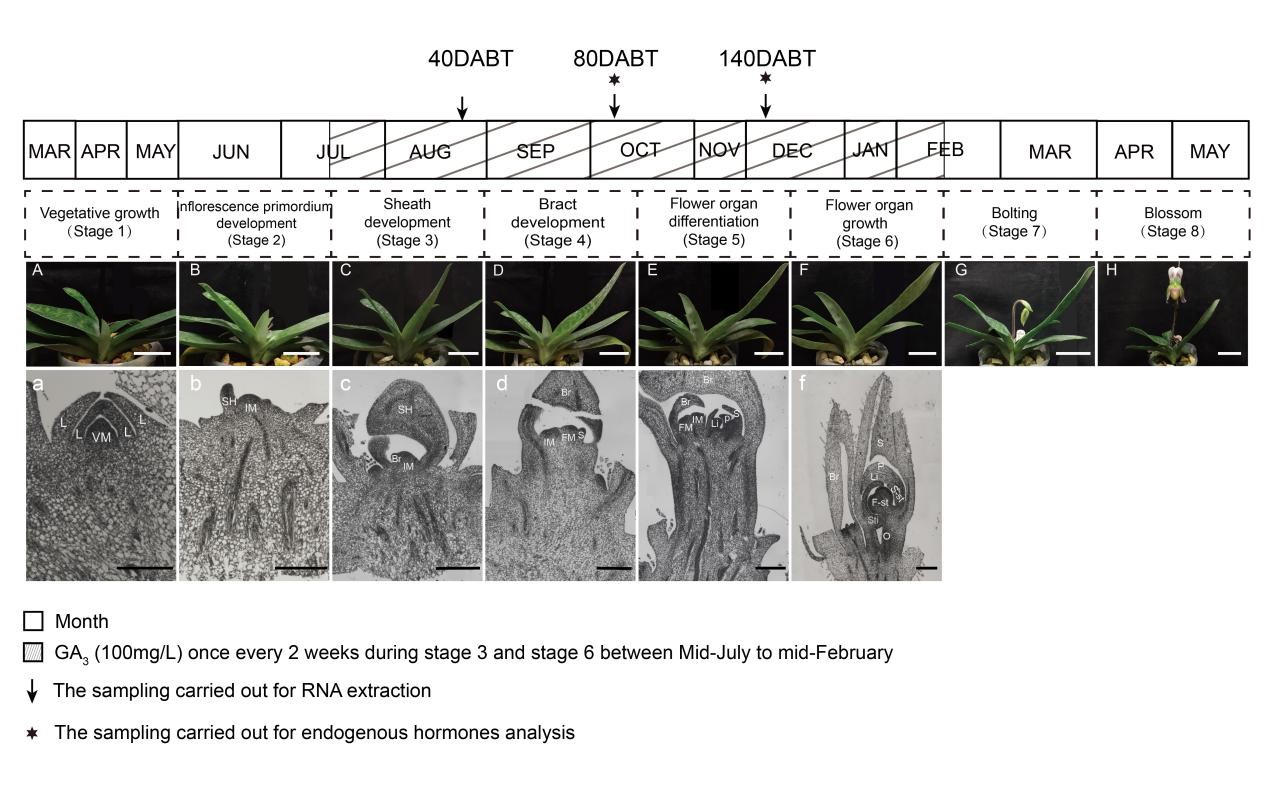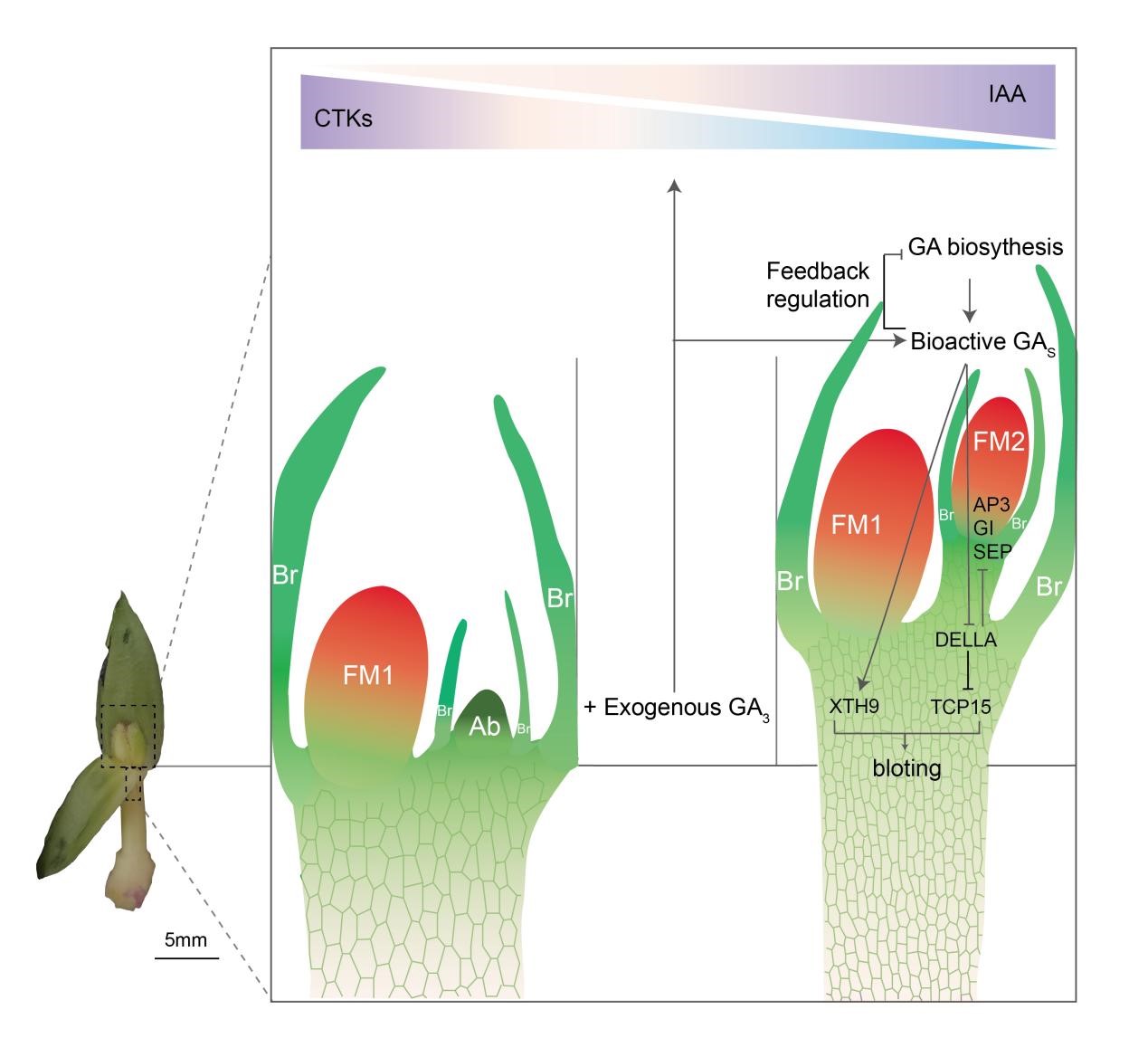Paphiopedilum orchids have a high ornamental value.However, studies on flower development regulation and the molecular mechanism behind are lacking.Most popular species of Paphiopedilum sold on the market will display one flower. All such one-flowered species have an additional flower bud in the apical bract that fails to develop further once the dominant flower is opened. Presently, the flowering of most of Paphiopedilum species is non-uniform and uncontrollable. Flower abundance and timing are two key horticultural traits that substantially affect the economic and ornamental value of orchids. Therefore, by better understanding the flowering regulation mechanism, we could precisely control flowering time and increase flower productivity to greatly increase their economic value.
Researchers from South China Botanical Garden of Chinese Academy of Sciences found an exogenous GA3 application promoted flowering of P. callosum by inducing its early bolting instead of the floral transition of dominant flowers. Applying GA3 effectively promoted lateral flower differentiation, resulting in a two-flowered inflorescence.
Based on the cytological observations, they were able to explore the whole development process of P. callosum buds, from vegetative to reproductive growth (Fig. 1). Flower organ differentiation stage (Stage 5) is the key stage for the regulation of flower numbers: in the absence of an intervention before this stage, the lateral buds will become aborted buds attached to the dominant flower.

Fig. 1. Morphology and cytology of a new shoot from vegetative to flowering in P. callosum.
In stage 5, the exogenous GA3 application stimulates the synthesis of endogenous GA3 and is accompanied by a decreasing level of CTKs level and an increasing level of IAA. Endogenous levels of GA3 are fine-tuned via feedback control of GA-synthesis and GA-degradation genes. More bioactive GAs up-regulate PcXTH9 expression and thereby affect the binding activity of DELLA-TCP proteins with cell-cycle genes, thus promote the bolting process. The low CTK/IAA ratio and high GA level, in combination with the greater expression of PcAP3, PcPI, and PcSEP, induce floral meristem formation that contributes to lateral flowering in the P. callosum (Fig.2). This study provides insight into mechanisms regulating flower development of P. callosum.

Fig. 2. Proposed working model for the role of GA3 in promoting lateral flower formation and bolting in P. callosum
This work has been published online in Horticulture Research (if=6.793), entitled“Exogenous GA3promotes flowering inPaphiopedilum callosum(Orchidaceae) through bolting and lateral flower development regulation”. Ph.D student Yin Yuying (South China Botanical Garden), is the first author of the paper, Prof. Fang Lin and Prof. Zeng Songjun are the co-corresponding authors of the paper. Article link: https://academic.oup.com/hr/advance-article/doi/10.1093/hr/uhac091/6572268?guestAccessKey=b24130c1-a929-4c94-b716-147ffb6e0a8f



